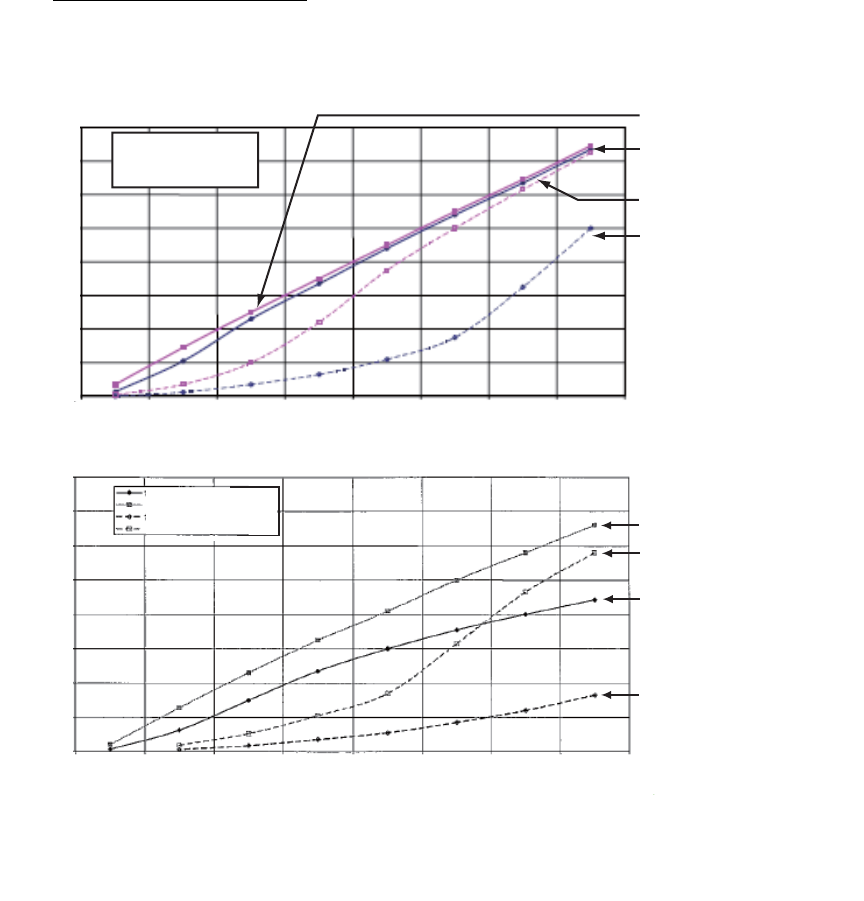
2. RADAR, CHART RADAR OPERATION
2-6
2.6.2 How to reduce rain clutter manually
Control Unit: Push the A/C RAIN control to display [MAN] on the RAIN mode indica-
tion on the Status bar. While watching the radar picture, adjust the A/C RAIN control
to reduce the clutter.
Trackball module: Click the RAIN mode indication on the Status bar to show [MAN].
For coarse adjustment, put the cursor within the slider bar area then push the left but-
ton. For fine adjustment, put the cursor at the end of the slider bar then roll the trackball
while pushing and holding down the left button. Release the button to finish.
Note: The detection range is reduced when the RAIN is used to show targets in rain.
Generally, the amount of rain, TX pulse length and TX frequency are factors in deter-
mining how the detection range is affected. The figures shown below illustrate this oc-
currence.
How to interpret the graph
Using the X-band graph as an example, a radar target originally detected on the 8 NM
range can only be detected in rain at ranges shown below:
Accordingly the short pulse may be preferable in rain on ranges < 10NM.
Reduction of range of first detection (NM)
16 mm/h rain - short pulse
4 mm/h rain - short pulse
16 mm/h rain - long pulse
4 mm/h rain - long pulse
14
16
12
10
8
6
4
2
0
0 2 4 6 8 10 12 14 16
16
12
10
8
6
4
2
0
14
0 2 4 6 8 10 12 14 16
4 mm/h rain (short pulse)
16 mm/h rain (short pulse)
4 mm/h rain (long pulse)
16 mm/h rain (long pulse)
4 mm/h rain (short pulse)
16 mm/h rain (short pulse)
4 mm/h rain (long pulse)
16 mm/h rain (long pulse)
Original range of first detection (NM)
Original range of first detection (NM)
16 mm/h rain - short pulse
4 mm/h rain - short pulse
16 mm/h rain - long pulse
4 mm/h rain - long pulse
16 mm/h rain - short pulse
4 mm/h rain - short pulse
16 mm/h rain - long pulse
4 mm/h rain - long pulse
Reduction of rain to first detection due to rain at S-band
Reduction of rain to first detection due to rain at X-band
The author thanks the International Electrotechnical Commission (IEC) for permission to reproduce Information from its Interantional
Standard IEC 62388 ed.1.0 (2007). All such extracts are copyright of IEC, Geneva, Switzerland. All rights reserved. Further
information on the IEC is available from www.iec.ch. IEC has no responsibility for the placement and context in which the extracts
and contents are reproduced by the author, or is IC in any way responsible for the other content or accuracy therein.
Reduction of Range of First Detection (NM)Reduction of Range of First Detection (NM)


















